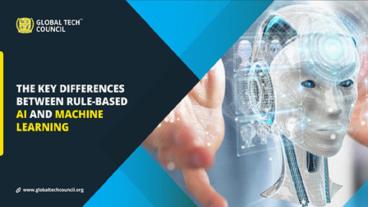The Key Differences Between Rule-Based AI And Machine Learning - PowerPoint PPT Presentation
Title:
The Key Differences Between Rule-Based AI And Machine Learning
Description:
While a rules-based system could be considered as having “fixed” intelligence, in contrast, a machine learning system is adaptive and attempts to simulate human intelligence. Eventually, the machine will be able to interpret, categorize, and perform other tasks with unlabeled data or unknown information on its own. – PowerPoint PPT presentation
Number of Views:205
Title: The Key Differences Between Rule-Based AI And Machine Learning
1
- Session 1
2
- Rule-based systems and machine learning models
are widely utilized to make conclusions from
data. Both of these approaches have advantages
and disadvantages. Several corporations are
implementing and exploring tasks related to
artificial intelligence to automate business
processes, upgrade product improvement and to
enhance market experiences. This blog provides
some of the crucial points that should be
considered before doing investment in any of the
techniques. The correct AI strategy is very
crucial for the development of the business. The
emerging technologies such as machine learning
and artificial intelligence contribute a lot in
development and productiveness. Machine learning
certification provides you a deep insight into
the industry. This blog provides a guide for
businesses to debate machine learning vs
rule-based artificial intelligence.
3
What is rule-based Artificial Intelligence?
- A system that accomplishes artificial
intelligence through a rule-based model is known
as rule-based AI systems. There is no doubt that
the demand for artificial intelligence developer
is increasing day by day. A rule-based artificial
intelligence produces pre-defined outcomes that
are based on a set of certain rules coded by
humans. These systems are simple artificial
intelligence models which utilize the rule of
if-then coding statements. The two major
components of rule-based artificial intelligence
models are a set of rules and a set of facts.
You can develop a basic artificial intelligence
model with the help of these two components.
4
What is Machine learning?
- A system that accomplishes artificial
intelligence through machine deep learning is
known as a learning model. The machine learning
system defines its own set of rules that are
based on data outputs. It is an alternative
method to address some of the challenges of
rule-based systems. ML systems only take the
outputs from the data or experts. ML systems are
based on a probabilistic approach. ml
certification provides practical training of
large datasets.
5
Difference between rule-based AI and machine
learning
- The key difference between rule-based artificial
intelligence and machine learning systems are
listed as below - 1. Machine learning systems are probabilistic and
rule-based AI models are deterministic. Machine
learning systems constantly evolve, develop and
adapt its production in accordance with training
information streams. Machine learning models
utilize statistical rules rather than a
deterministic approach. - 2. The other major key difference between machine
learning and rule-based systems is the project
scale. Rule-based artificial intelligence
developer models are not scalable. On the other
hand, machine learning systems can be easily
scaled.
6
- 3. Machine learning systems require more data as
compared to rule-based models. Rule-based AI
models can operate with simple basic information
and data. However, machine learning systems
require full demographic data details. - 4. Rule-based artificial intelligence systems are
immutable objects. On the other hand, machine
learning models are mutable objects that enable
enterprises to transform the data or value by
utilizing mutable coding languages such as java.
7
- When to utilize machine learning models
- Pure coding processing
- Pace of change
- Simple guidelines don't apply
- When to utilize rule-based models
- Not planning for machine learning
- Danger of error
- Speedy outputs
8
Conclusion
- Machine learning and rule-based models have their
own advantages and disadvantages. It totally
depends on the situation that which approach is
appropriate for the development of business.
Several business projects initiate with a rule or
excerpt based models to understand and explore
the business. On the other hand, machine learning
systems are better for long terms as it is more
manageable to constant improvement and
enhancement through algorithm and data
preparation. As the world of large datasets
increases, its time to glance beyond binary
outputs by utilizing a probabilistic rule rather
than a deterministic approach. - To get instant updates about emerging
technologies and explore more about ai
certification, you can check out the Global Tech
Council website.
9
(No Transcript)































